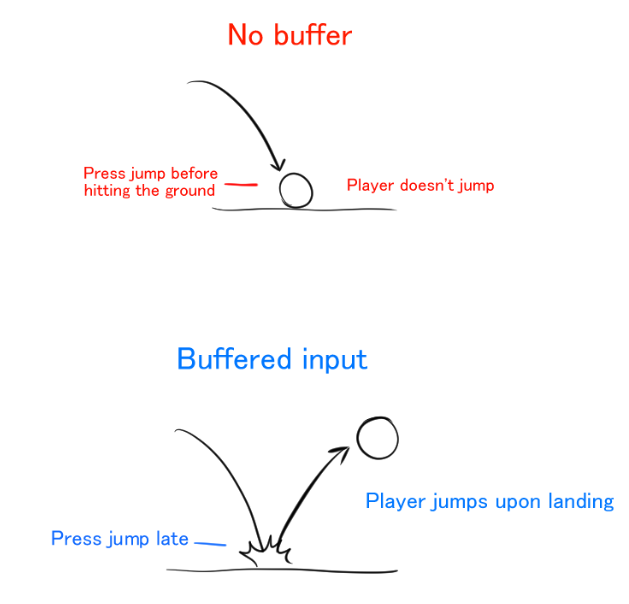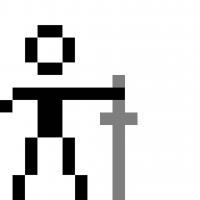To explain what I mean first (since I don't know if there's a common term for it).
The following example assumes the player is mid jump, and presses the jump button before hitting the ground;

Basically it's so that if the player presses the jump button a few frames before they touch the ground, they will still jump. It's just something that makes things a little easier.
How do you feel about buffering the player's input when it comes to jumps? Do you do it yourself? Do you like it, dislike it? Do you think it has certain unforeseen disadvantages?, etc.














